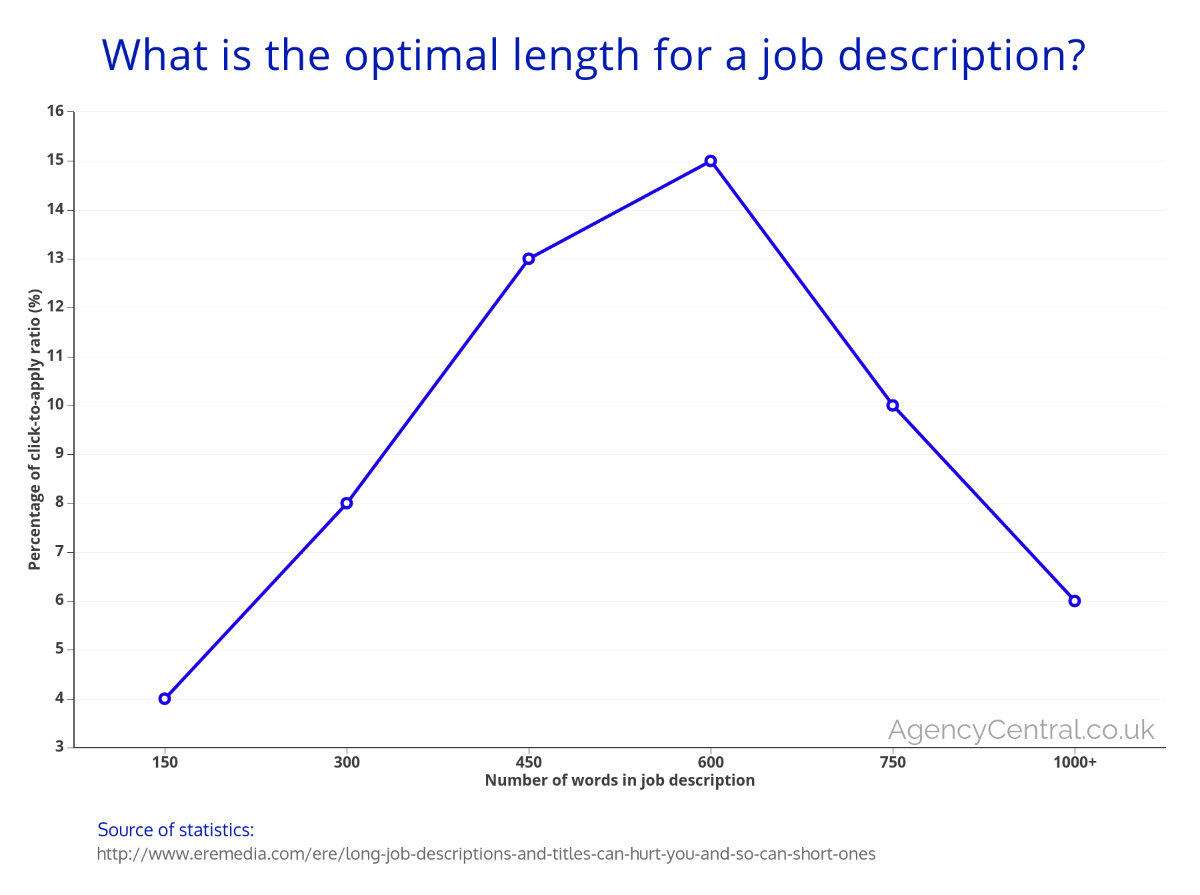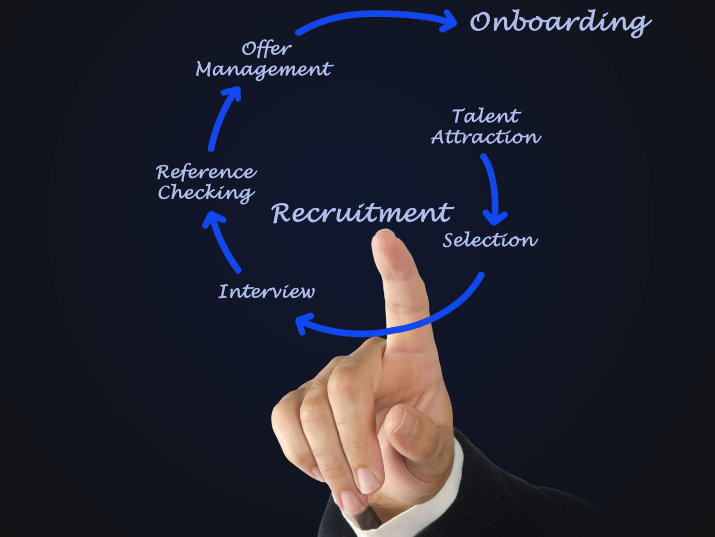As any good employer will tell you, the most important component of any company is the employees. Motivated, qualified, passionate employees. Finding these people can be exceptionally difficult if you don’t know where to start. The key is in the recruitment process, managing it effectively from start to finish and ensuring all quality measures have been taken.
So what exactly is the best way to do this? To find out, we’ve conducted some research and investigation into some of the biggest companies around the world – so that we can tell you what the 5 most important parts of an effective recruitment process are…
Finding a needle in a haystack can sometimes seem a more achievable prospect than finding the perfect candidate. Hopefully, your recruitment process isn’t quite as time-consuming as sifting through hundreds of candidates until you find that promising, shiny one. To avoid this from happening, it is important to set a few fundamental rules to follow.
The second you know there’s a vacancy that needs filling, it’s tempting to get on the phone right away and draft in the help of a professional recruitment agency. While this is the most effective way (9 out of 10 candidates use a recruitment agency), it shouldn’t be the first thing you do. Whatever the role might be, whether general or specialist, you should get a clear understanding of the candidate you require, when you need them and what skills are essential.
Each stage of the recruitment process is just as crucial as the next if you are to attract the very best talent. To skip a step or take any shortcuts can undermine the quality of the end product you seek. Below are 5 of the most important steps to follow when recruiting for the perfect candidate.
Time frame
If you are to have a clear plan of your recruitment drive, setting a time frame is fundamental. Don’t worry too much about sticking to an exact day, as allowing some leniency will help to prepare for (almost inevitable) unexpected delays. But giving yourself a deadline for each step in the process, such as shortlisting and interviews, will generate the urgency it requires.
Firstly you need to establish what the start date for the job is going to be, then work backwards to understand when each stage needs to be completed by. Although this method won’t suit all roles (some requiring ASAP starts), it will help to manage the timescale and workload allocated to each step in the entire recruitment process.
A slow hiring process can be detrimental to your brand image and candidate experience – meaning attracting the highest calibre talent next time around will prove even more difficult.
In most cases (taking into account shortlisting and a 2-stage interview), from the moment a job is advertised to the moment the new employee starts work usually takes around 8 weeks. During this time, initial contact and briefing with a recruitment agency has taken place, a refined job description has been drafted, shortlists of potential candidates have been sent through and, finally, interviews and (if all goes to plan) job offers have been made.
You’re probably thinking this is all great, but what’s the rush? Surely I should be taking my time to ensure I hire the right person? Yes, you should be hiring the right person, but that doesn’t always mean a slow recruitment process. Slow hiring doesn’t always mean high-quality candidates.
Although you might think you’ve had more time to gather as much information as possible, had them complete several competency tests and assessment days, and received references from every past employer and person they’ve ever met, it actually only serves to drive them away. The best candidates will grow tired of constantly having to ‘prove their worth’ to you and will no doubt receive another job offer whilst you are faffing around.
The primary aim of Agency Central is to list different types of recruitment agencies all in one place – making life much easier for both employers and candidates.
This leaves you with a choice of mediocre candidates at best, making you wistful of the superstar employee you could have had. A slow hiring process can be detrimental to your brand image and candidate experience – meaning attracting the highest calibre talent next time around will prove even more difficult.
Recruitment strategy
The next challenge is to choose the right recruitment strategy to suit the job that you’re hiring for. The differences between contingency and retained recruitment can vary from agency to agency, but it’s worth noting that retained recruitment strategies tend to be a little more bespoke and therefore lend themselves to more high-end, niche roles.
Retained recruitment tends to operate best for roles such as Directors and CEOs, whereas contingency recruitment can be much more flexible and diverse. As a result, a contingency search is usually much quicker – due to a plethora of talent being more easily available.
Finding such agencies is the next challenge. The vastness of the internet can sometimes be a problem, especially when you are trying to seek out a perfect partner to recruit for your role. Fortunately, the primary aim of Agency Central is to list different types of recruitment agencies all in one place – making life much easier for both employers and candidates. From specialist to generalist, operating in one sector or several, Agency Central lets you refine your search in various ways in order to find a local agency that suits your exact needs.
A lot of companies are guilty of ‘dressing’ a job up to be something it’s not. If the job is for a bartender, say it’s for a bartender, not a ‘Beverage Dissemination Officer’.
Once you have narrowed down your selection of potential agencies to use (made easier through the ‘highlight agency’ button on each listing), it is time to consider which strategy to go with. The reason you need to decide this now is because retained recruitment demands guaranteed exclusivity to the role, meaning you can only use one agency. Contingency recruitment doesn’t require this, so you’ll find it is possible for employers to have multiple agencies working on a single role.
The next step, once you are about to get in touch with an agency, is to have an effective job description to hand. Being vague and unprepared about the role won’t do you or the recruiter, any favours and will likely make the process much slower and less effective. So it is important to have as much detail about the job as possible, to help in identifying the most suitable candidates. Drawing up a job description needn’t be a laborious task, so long as you follow the next step in the process
Job description
Building a job description can either be very easy or very hard, depending on your closeness and familiarity with the role. More technical roles, such as IT or Engineering, will often require skills and experience in using very specific software and machinery. Explaining these details as clearly as possible is crucial if you are to find the most suited candidates.
Depending on the type of role you’re recruiting for will determine what type of interview(s) you have with the candidate. Some jobs may require an assessment day for example, in order to test the proficiency of writing skills or IT software usage.
Job descriptions are much more than simply stating the title of the position and required qualifications. Think about daily tasks that need to be completed, who (if anyone) they will be reporting to and what personality traits are desirable. Once the experience and qualification necessities are understood, candidates like to get a feel for the job on a more day-to-day level.
It is by making your job description as detailed as possible that you will attract the best talent. You can prioritise the most important skills by having subsections titled ‘essential’ and ‘desirable’, This way it gives candidates an idea of how well they would suit the position.
In immediate contradiction to that last point, avoid rambling and making the description too long. Below we can see a line chart that demonstrates the rate that candidates click on job advertisements, based on the word count:

The chart (based on a sample size of 400,00 jobseekers) effectively displays that job descriptions circa the 600-700 word region receive the most applications. Anything significantly shorter or longer than this can be detrimental to the performance of your campaign. Another feature that is popular and effective in any good job description is the use of bullet points to highlight ‘key responsibilities’ or ‘qualifications’. This makes it easier for candidates to digest, making the process of applying more appealing and efficient.
Another element to consider when building your job description is the job title itself. A study similar to the one above looked into ‘length’ of job titles in relation to their click-through rates. However, this is very much role dependent and therefore cannot be taken as gospel across all positions.
From the study, it would appear that job titles featuring 50-60 characters outperformed others by around 35%. Although an interesting result, there are inevitably only so many ways you are able to lengthen the job title of a ‘Driver‘ or a ‘Nurse‘, so use your best judgement and common sense with this one.
Last but by no means least, make it accurate. A lot of companies are guilty of ‘dressing’ a job up to be something it’s not. If the job is for a bartender, say it’s for a bartender, not a ‘Beverage Dissemination Officer‘. This will avoid confusion, megalomania and a sense of disillusionment when they realise what the job really involves.
Shortlisting & interview
So you’ve made it this far. After toiling with your job description, deciding on your strategy and choosing your agency, it’s time to get serious. To arrive at the shortlisting process is somewhat of a celebration to employers, as it means the end of skim-reading irrelevant CVs for 7 seconds and ploughing through hundreds of applications until they can see the colour of their desk again.
The key to making the shortlisting process as efficient as possible is to become ‘ultra-critical’. I don’t mean in the sense that one person used a nicer font on their CV than the other, but consider finer details such as their proximity to your business, their experience and their applicable skills / qualities. At this point all shortlisted candidates should be competent enough to do the job in question, otherwise it’s a pretty poor shortlist.
Once you have reduced the list to maybe 2 or 3 candidates, it’s time to prepare for interviews. Our article covering ways to design effective interview questions goes into detail on how to use open questions and learn the most about each candidate in such a short space of time.
Depending on the type of role you’re recruiting for will determine what type of interview(s) you have with the candidate. Some jobs might require an assessment day for example, in order to test the proficiency of writing skills or IT software usage. The most important thing to remember is that you should never offer the job after a first interview and, where possible, have at least two people interviewing – as this gives different perspectives on the candidate.
At this point in the process, you will often be left with two very strong candidates for the position. The difficult part now comes when you have to choose one of them (and of course let the other one down). Always make sure you get in touch with the unsuccessful candidate though as, no matter how streamlined your process becomes, having the decency to inform candidates of your decision will determine how your business is perceived.
Induction
So you’ve finally made your choice. Having whittled down the thousands of CVs and interviewees, you’re left with one. You’re totally confident that you’ve made the right choice, as they seem more than competent at everything you threw their way. Nothing to worry about right? Wrong.
You still have to deliver a quality induction to this candidate for two main reasons. Firstly, although they know what the job entails, they don’t know how your company actually operates, so you need to show them. Introduce them to all of the staff members, show them where the different offices / departments are, even tell them what local shops are handy for their dinner breaks.
This all adds to a sense of caring and professionalism on your part, but also ensures that the new starter will hit the ground running from day one. You can even buddy them up with a long-standing employee for a couple of days, to show them the ropes and integrate them.
Unfortunately a lot of companies tend to brush over this step of the process, seeing the induction as something you just ‘learn on the job’. Although partly true, you still want to give the new starter time to orientate themselves and find their ‘niche’ within your company.
Conclusion
If you follow all of the above steps in your recruitment process you can’t go far wrong. Of course, as with anything that is dependent on so many people, the process can always have unexpected delays and issues. Interview cancellations, no-shows and just an overall lack of applicable talent can all cause the cogs to grind to a halt. It’s important to remember though, so long as you set out a timescale, provide an accurate job description and utilise the most suitable strategy, then you are minimising the risk of any problems occurring.
By carrying out such a thorough recruitment process you are also potentially future-proofing your company for years to come. Ensuring a candidate is a perfect fit for the role, and overall working ethos of the company, will increase your chances of employee retention – leading to less hiring campaigns down the line and more money and time saved.



